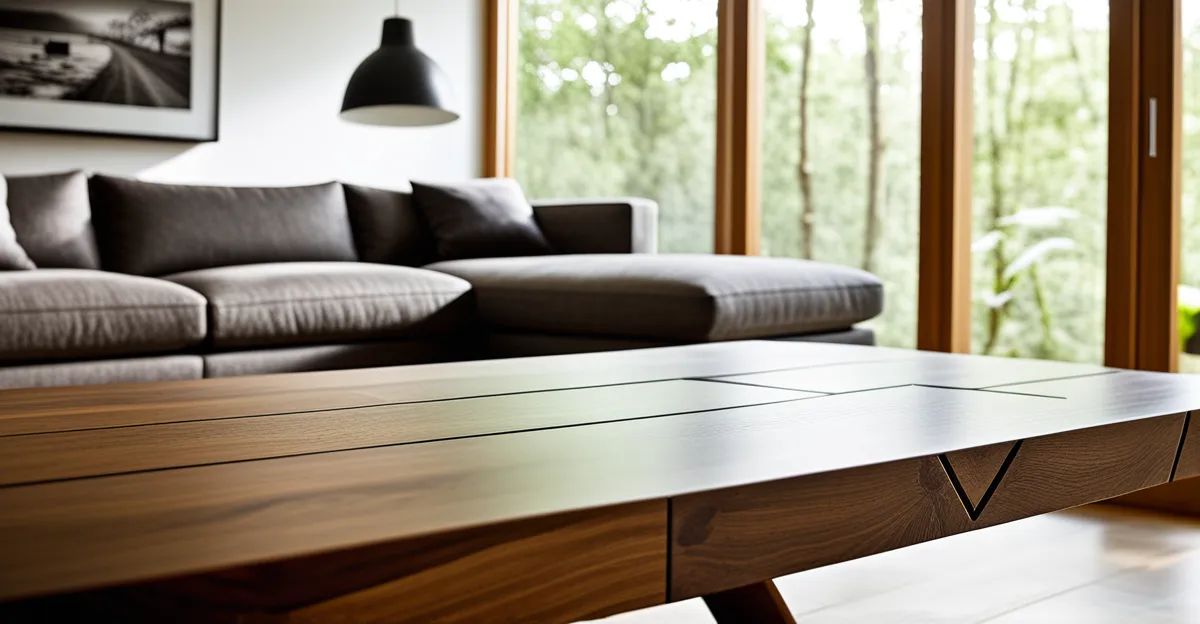How Sustainable Furniture Enhances Your Living Space
In the era of increasing environmental awareness, the way we furnish our homes has become a crucial aspect of our eco-friendly lifestyle. Sustainable furniture is more than just a trend; it’s a conscious choice that can significantly enhance your living space while minimizing its environmental impact. Here’s a deep dive into how sustainable furniture can transform your home.
The Importance of Sustainable Materials
When it comes to sustainable furniture, the materials used are paramount. Traditional furniture often relies on resources that are harvested unsustainably, such as virgin wood, and may involve processes that harm the environment. In contrast, sustainable furniture leverages eco-friendly materials that reduce the carbon footprint and promote environmental sustainability.
Additional reading : How Can Home Design Choices Impact Sustainable Living in the UK?
Eco-Friendly Materials to Look For
- Reclaimed Wood: Using reclaimed wood from old buildings, trees that have fallen, or other sources reduces the demand for newly harvested wood and helps in preserving forests.
- Recycled Materials: Furniture made from recycled plastics, metals, or other materials reduces waste and conserves natural resources.
- Sustainable Wood: Look for wood certified by organizations like the Forest Stewardship Council (FSC), which ensures that the wood is harvested responsibly.
- Natural Fibers: Materials such as bamboo, hemp, and jute are highly renewable and require less water and pesticides compared to traditional crops.
- Low-VOC Paints and Finishes: These reduce indoor air pollution and improve air quality within your home.
Environmental Impact of Sustainable Furniture
The environmental benefits of choosing sustainable furniture are multifaceted and significant.
Reducing Carbon Footprint
Sustainable furniture often involves locally sourced materials, reducing transportation emissions. Additionally, the production processes for sustainable furniture tend to be more energy-efficient and generate less waste.
Topic to read : What Are the Must-Have Trends in UK Home Living for 2024?
Minimizing Waste
Furniture made from recycled materials or designed for recyclability helps in reducing the amount of waste sent to landfills. This circular economy approach ensures that resources are used efficiently and responsibly.
Improving Indoor Air Quality
Eco-friendly furniture materials and finishes, such as low-VOC paints, contribute to better indoor air quality. This is particularly important for health, as indoor air can be up to five times more polluted than outdoor air.
Enhancing Your Home with Sustainable Design
Sustainable furniture is not just about being eco-friendly; it also enhances the aesthetic and functional quality of your home.
Interior Design Considerations
- Timeless Design: Sustainable furniture often features timeless designs that avoid fast furniture trends, reducing the need for frequent replacements.
- Quality Over Quantity: High-quality, sustainable pieces are built to last, providing long-term value and reducing the cycle of buying and discarding.
- Natural Beauty: Materials like reclaimed wood and natural fibers bring a unique, organic beauty to your home decor.
Practical Tips for Choosing Sustainable Furniture
- Research Furniture Brands: Look for brands that prioritize sustainability and transparency in their sourcing and production processes.
- Check Certifications: Certifications like FSC for wood and GOTS for textiles ensure that the materials meet high environmental standards.
- Consider the Lifecycle: Think about the entire lifecycle of the furniture, from sourcing to disposal, and choose pieces that can be recycled or repurposed.
Examples of Sustainable Furniture in Action
Innovative Designs
- Michael Jantzen’s “House Sitter”: Originally conceived as a portable ski chalet, this prefabricated dwelling made of fiberglass-reinforced plastic is a prime example of space-age optimism and sustainable design. While not strictly furniture, it showcases the potential for innovative, eco-friendly design in home decor[1].
Real-Life Applications
- Bamboo Furniture: Bamboo is a highly renewable resource that can be harvested in as little as three to five years, compared to traditional wood which can take decades. Bamboo furniture is lightweight, durable, and adds a natural touch to any room.
- Upcycled Furniture: Creative designers are now turning old pallets, crates, and other discarded materials into functional and stylish furniture pieces. This approach not only reduces waste but also adds a unique, eco-conscious element to your home decor.
Table: Comparing Sustainable and Traditional Furniture Materials
| Material | Sustainability Features | Environmental Impact | Durability |
|---|---|---|---|
| Reclaimed Wood | Reduces demand for new wood, preserves forests | Low carbon footprint | High |
| Recycled Plastics | Reduces waste, conserves natural resources | Low carbon footprint | Medium to High |
| Sustainable Wood | Certified by FSC, responsible harvesting | Moderate carbon footprint | High |
| Bamboo | Highly renewable, low water and pesticide use | Low carbon footprint | High |
| Traditional Wood | Often harvested unsustainably | High carbon footprint | Medium to High |
| Synthetic Materials | Non-renewable resources, high waste generation | High carbon footprint | Medium |
Quotes from Experts and Homeowners
- “Sustainable furniture is not just about the environment; it’s about creating a healthier, more beautiful home. When you choose sustainable materials, you’re investing in your well-being and the well-being of the planet.” – Sarah Johnson, Interior Designer
- “I was surprised by how much of a difference sustainable furniture made in my home. Not only does it look amazing, but it also feels good knowing I’m doing my part for the environment.” – Emily Davis, Homeowner
Choosing sustainable furniture is a powerful way to enhance your living space while contributing to a more eco-conscious lifestyle. By selecting materials that are environmentally friendly, reducing waste, and improving indoor air quality, you can create a home that is both beautiful and sustainable.
Final Tips for a Sustainable Home
- Start Small: Begin with one or two sustainable pieces and gradually integrate more into your home decor.
- Educate Yourself: Continuously learn about new sustainable materials and design trends.
- Support Eco-Conscious Brands: Choose brands that prioritize sustainability and transparency.
In the end, sustainable furniture is not just a choice; it’s a commitment to a better future for your home and the environment. By making informed decisions about the furniture you bring into your home, you can create a space that is both stylish and sustainable.











